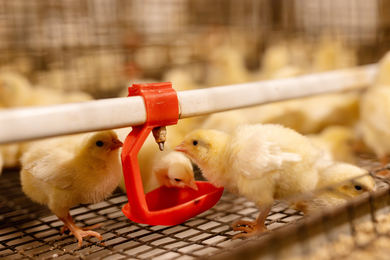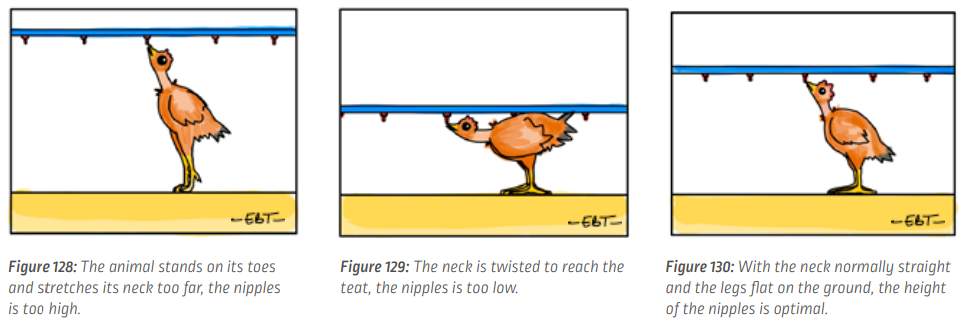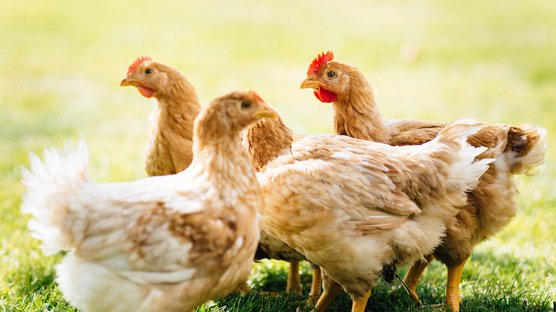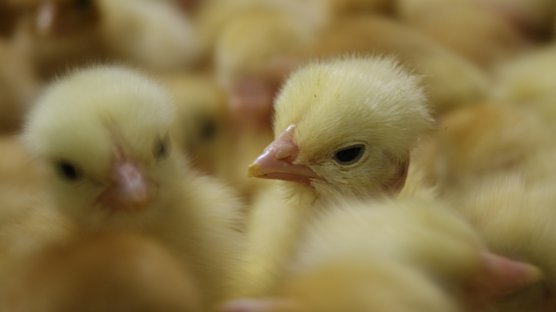
Published on June 30, 2024
Watering system set-up and data recording
Watering is an important part of a chick's life. Setting up a regulated watering system will enable chicks to develop properly from the moment they arrive in the building. In this article, we will discuss why it is important to have a water rationing system, what criteria define the ideal amount of water, and the benefits of recording data during rearing.
Watering
It is necessary to control the position of the pullets coming to drink and adapt. The chick and then the pullet should not twist its neck under a nipples that is too low, or have to rise onto the tips of its toes under a nipples that is too high.

General data
The quantity of water distributed is defined depending on:
- the hardness of the crop when the water is cut off: a crop that is too hard may indicate that watering is insufficient and a crop that is too soft means that watering can be reduced a little
- temperature: the WATER/FEED ratio changes with the weather. In winter it is about 1.5-1.6 and rises to 1.8-2 in summer (sometimes more when it is very hot)
- the condition of the litter: litter that has deteriorated too much is the consequence of droppings that are too liquid and this is sometimes explained by excessive watering. If the crops are hard, watering should nevertheless not be reduced even with deteriorated litter (it is better to change the ventilation parameters).
The water supply is closed at night to limit the development of undesirable micro-organisms in the drinkers outside the consumption phases.
During the first two weeks the drinkers are cleaned daily. Then the frequency is reduced to reach a minimum of cleaning once a week.
Throughout rearing, the farmer must control the water consumption. The height of the water in the drinkers must be controlled in order to prevent any waste (max. 1 cm).
In addition to the quantity of water distributed, its quality must be monitored by the farmer. To do this he can:
- check its potability. It may be necessary to use chlorine to improve the potability
- prior to vaccinations via the drinking water, check there is no chlorine or any other disinfectant substance in the drinking water. If necessary, use a neutraliser.
Water rationing
Water rationing avoids any overconsumption which causes digestive problems and deterioration of the litter. It starts with the 5 days out of 7 feed rationing. Remember, this ratio is as follows:
- 1.5 to 1.6 in winter
- 1.8 to 2 in summer, sometimes more.
The days when feed is not distributed, a distribution of 2 to 4 hours of water is made or even more depending on the temperature.
In all cases, the water must not be cut off while there is feed in the feed chains.
It is necessary to make sure the drinkers are empty and left dry during the night.
From Week 17 until Week 20 it is important to increase the duration of watering progressively until the same duration as that of light is reached. In fact, this is the period when the ovarian cluster develops and the physiological requirements for water are then greater. Then water rationing can be restarted.
Recording during rearing
Throughout the rearing period, the farmer records the essential data for monitoring the batch on the rearing form:
- average weight of the animals weighed weekly
- daily consumption of feed and water
- daily mortality
- daily reading of temperatures in the various controlled zones
- duration of lighting
- health and/or prophylactic procedures.
It is important to use the forms for filling in supplied by SASSO during rearing and production. The explanatory technical data sheets are all available on our website: https://www.sasso-poultry.com

Figure 131: This type of data sheet, available on the website, allows you to have the SASSO standards for weight objectives, ration evolution, light program.
You can find all our female breeders data sheets directly on our website by going to "Products" > "Colored Chickens" > "Female breeders".




